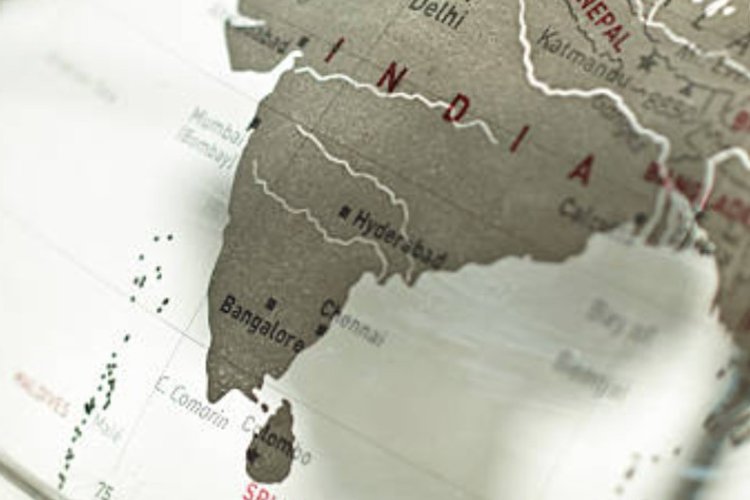
South India continues to pull ahead of most northern states on almost every major development metric. The divergence is firmly entrenched across income, education, health and demographic stability. It is tempting to attribute this gap to historical accident or social reform, but the real explanation lies in governance quality — the capacity of states to plan, deliver and sustain public services over long periods. New Delhi’s policy debates often overlook this structural divide, even though it shapes one of the most important economic narratives of independent India.
Education has been central to the southern growth model. Kerala, Tamil Nadu and Karnataka made early, sustained investments in public schooling and higher education. Tamil Nadu’s Gross Enrolment Ratio (GER) in higher education, at around 47%, remains among the country’s highest, while Uttar Pradesh and Bihar continue to fall below the national average, according to the AISHE. These achievements were not merely a function of spending more money; they reflected disciplined governance, stable policy regimes, and high-quality delivery systems.
READ | Rising credit-deposit ratio signals a structural funding problem
Better education created a foundation for improved health outcomes. Kerala’s infant and maternal mortality rates are among India’s lowest, supported by decades of investment in primary healthcare and decentralised institutions, as shown in the NITI Aayog Health Index. What distinguishes the southern experience is the continuity of commitment — the ability of governments, regardless of political turnover, to maintain priorities in health, schooling and welfare. That consistency produced a virtuous cycle: stronger human capital raised productivity, which widened the fiscal base, which in turn financed further investment in social sectors.
Fiscal strength and the ability to spend well
Southern states enjoy stronger fiscal capacity even though their share of central tax devolution has declined over recent Finance Commission cycles. Higher incomes broaden tax bases, allowing states such as Kerala to maintain per capita government expenditure above ₹86,000, far ahead of Bihar or Uttar Pradesh, as reported in the RBI State Finances Report. Yet the more important difference lies in the effectiveness of spending. Southern states convert fiscal resources into outcomes because administrative systems are largely capable, predictable and equipped to deliver.
In contrast, northern states often confront the paradox of comparable spending but poorer results. The gap is explained by governance quality: project execution, monitoring systems, and last-mile service delivery vary widely, and these institutional gaps blunt the impact of public investment.
South India: The infrastructure-industry nexus
A strong infrastructure base reinforces the South’s lead. Geography helps — a long coastline, major ports such as Chennai, Kochi and Visakhapatnam, and early exposure to global trade — but policy has mattered more. Better roads, reliable power supply and predictable regulation encouraged industries to cluster in Tamil Nadu, Karnataka and Andhra Pradesh. The Annual Survey of Industries continues to show that a large share of Indian factories and fixed capital formation is concentrated in these states.
Political stability, too, has been an asset. Investors value continuity, clear rules and functioning urban systems. This stability created an “institutional premium” that makes southern states attractive for domestic and foreign capital. It is no coincidence that IT services, electronics manufacturing and auto hubs have all flourished in this region.
Demography, state capacity and the coming strain
Lower fertility rates allowed southern governments to invest more per person and deliver services without overwhelming administrative structures. Northern states, still grappling with high population density and rapid growth, face a far more difficult governance challenge. But the demographic advantage is reversing. Kerala and Tamil Nadu are ageing quickly; their working-age populations are flattening. Unless productivity rises sharply and migration is managed well, growth will inevitably slow.
Cities such as Bengaluru and Chennai already feel the stress of large migrant inflows. The challenge is not migration itself but the governance burden it creates: planning for housing, transit, safety and social cohesion. In the South’s next phase of growth, the quality of administration will again be decisive — this time in managing ageing populations while maintaining economic dynamism.
Governance: The missing variable in the North
The debate on the South–North divide frequently misses the key variable: governance capacity. Southern states built institutional depth through decades of decentralised planning, professionalised bureaucracies and steady political regimes. Health, education and welfare systems improved because they were supported by functioning local governments and continuous administrative investment.
Northern states face a different political economy. High political volatility, stretched administrative systems and demographic pressures make policy continuity difficult. Two states may spend similar amounts on schooling or health, but the outcomes diverge sharply because the underlying delivery mechanisms differ. This governance gap — more than geography or culture — explains India’s regional divergence.
What the North can adapt from the southern playbook
Northern states must start with governance reform. Administrative capacity, continuity in policy priorities and empowered local bodies are essential for turning spending into results. Education and health require long-term attention: teacher training, early learning, maternal care and primary health systems deliver the highest returns in low-income regions. States must also expand their own revenue bases by modernising tax systems and widening economic activity, reducing dependence on central transfers and strengthening fiscal autonomy.
Without these changes, incremental programmes or higher allocations alone will not bridge the development gap.
South India’s rise reflects deliberate choices: invest in people, strengthen institutions and maintain governance continuity. The North’s challenges reflect equally deliberate neglect of these fundamentals. But the South faces new pressures — ageing populations, rising dependency ratios and the governance demands of large migrant inflows.
India’s growth trajectory now depends on convergence. The South must retain its productivity edge, while the North must accelerate its human capital transition. A stronger India requires both regions to succeed — not just the most capable ones.
